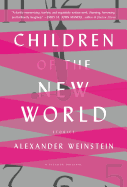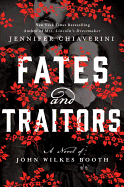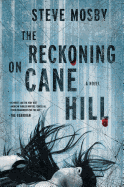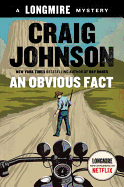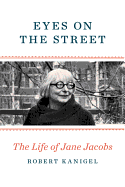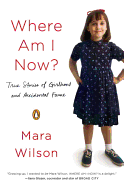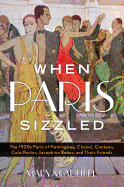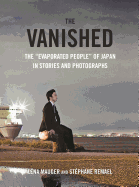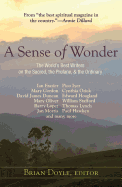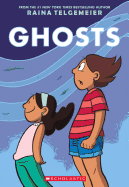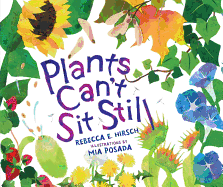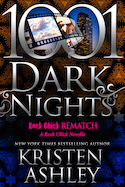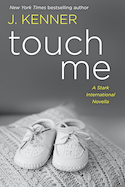 |
| photo: Elena Seibert |
Leonard S. Marcus is a writer and lecturer about children's books and the people who create them. He was born and raised in Mount Vernon, N.Y., and holds degrees in history from Yale and poetry from the University of Iowa Graduate Writers' Workshop. His award-winning books include Show Me a Story! Why Picture Books Matter; Dear Genius: The Letters of Ursula Nordstrom; Golden Legacy and The Annotated Phantom Tollbooth. Weston Woods has released a video based on his illustrated biography Randolph Caldecott: The Man Who Could Not Stop Drawing. Candlewick will publish his next interview collection, Comics Confidential: Thirteen Graphic Novelists Talk Story, Craft, and Life Outside the Box (September 27, 2016).
On your nightstand now:
The stack of books by my desk is more like it. Dear Life by Alice Munro, for her fine eye for detail and mastery of tone. The Hotel Years by Joseph Roth: a Viennese Jewish journalist's observations of daily life during the powder-keg years between the First and Second World Wars. Roth, a miniaturist, was in effect writing the obituary of a fabulous culture that was about to perish. Theodore Roosevelt in the Field by Michael R. Canfield, because Roosevelt was an ornithological child prodigy and our most literary president, which makes him a rare bird worth reading--and writing--about. El Deafo by Cece Bell, because I am completely smitten with the graphic novel as a mixed-media narrative form.
Favorite book when you were a child:
Laddie and the Little Rabbit was my first favorite book. It's an obscure Little Golden Book from 1952 with photographic illustrations by William Gottlieb. The brother and sister in the photos have a pet rabbit and a pet springer spaniel, and I had neither. I would dream about the pictures and project myself into them, just like Buster Keaton in Sherlock, Jr. Many years later I met Gottlieb's widow and learned that he had made his living primarily by photographing jazz musicians. Look at any photo of Billie Holiday or the young Louis Armstrong. Chances are, it's by him.
Your top five authors:
E.B. White, Elizabeth Bishop, Margaret Wise Brown, Graham Greene, Michel de Montaigne. Masters of clarity, arch-enemies of cant.
Book you've faked reading:
As an eighth grader, I enrolled in an after-school speed reading course and applied what I learned to one of the novels on the English class syllabus that year, A Passage to India. I read E.M. Forster's book so quickly that I missed one of the three main characters altogether. As you might imagine, I did not do well on the exam that followed. My poor performance came as such a surprise to my teacher that she pulled me aside after class on the day our exams were returned and asked in a concerned voice if I was having "problems at home." "No," I replied, "I've been taking speed reading." She urged me to go back to my old reading method, and I did.
 Book you're an evangelist for:
Book you're an evangelist for:
I would say just about any book illustrated by Alice and Martin Provensen. The Provensens' books are funny, urbane, unpretentious, toweringly ambitious, elegant, nuanced and down-to-earth. The Glorious Flight, which won the 1984 Caldecott Medal, is one of the easier ones to find. But what about their Shaker Lane? Or their The Iliad and the Odyssey? Or Alice's solo The Buck Stops Here? The Provensens kept reinventing themselves, and much of what they did is perfect of its kind.
Book you've bought for the cover:
Maira Kalman's The Principles of Uncertainty. The title did not especially grab me but the cover image made me feel I needed the book. The elegant figure in black is shown in a skater's pose but is more likely just slipping and sliding on very thin ice. Is something terrible, or ridiculous, about to happen? It's a beguiling blend of Franz Kafka and Charlie Chaplin.
Book you hid from your parents:
Summerhill by A.S. Neill. I was about 14 when I read this memoir by the founder of a British experimental boarding school that still exists. Neill let young people shape their own educations and defined education much more broadly than usual to include emotional development and sexuality, among other tricky subjects. I was bowled over that an adult could be so radically non-prescriptive and supportive, and in that regard so different from my parents. This was not a book to be left casually on the breakfast nook table.
Book that changed your life:
Goodnight Moon. I was about 28 when I happened to read it for the first time in a bookstore one evening. (It seems I have always read below my age level!) When Margaret Wise Brown's picture book sent a chill up my spine--as Emily Dickinson said only a real poem would--I was intrigued, and the timing could not have been better. I had a boring day job and was looking for a project with which to jumpstart a writing career. I had done an independent history project at college on early American children's books, was currently writing poetry, and had always read biographies. That evening I decided to look into the possibility of writing a biography of the poet I had just stumbled upon--a real poet for children. Writing Awakened by the Moon, my book about the author of Goodnight Moon, took 10 years but it opened every door to the work I have done since--books, interviews, articles, exhibitions, all of it.
Favorite line from a book:
A line that I have enjoyed quoting for friends, and which I find applies to a great many situations, comes from Departures, a book of poems by Donald Justice: "After the overture, the opera seemed brief." Another favorite line is from a book by John Cage. It goes something like this: "If you don't know what to do next, do something boring and ideas will flock to you like birds."
Five books you'll never part with:
Charlotte's Web by E.B. White (nothing works better to clear my head); my copy of I Saw Esau signed by Iona Opie and Maurice Sendak (two heroes in one); Barbara Bader's American Picturebooks from Noah's Ark to The Beast Within (I refer to it so often that I think I really would miss not having it around). This is very hard, though I seem to have a few thousand books that I have not been able to part with so far....
Book you most want to read again for the first time:
Alice's Adventures in Wonderland. I have always loved the way Lewis Carroll toys with logic and upends language, using both as though they were his own inventions. When I read Alice for the first time, at maybe 12, I had the thrilling feeling of being taken to the extreme edge of what words--and pictures--could do. The only comparable experience I have had was my first time in New York City, which has never stopped seeming magical to me in pretty much the same way.
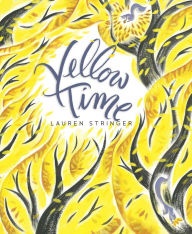 Yellow Time (Beach Lane /S&S) by Lauren Stringer is a joyfully illustrated, lyrical picture book about the fleeting days before the wind blows the fall leaves into a "symphony of yellow." It begins, "The squirrels are too busy to notice./ And the geese have already gone./ Other birds have left, too,/ but not the crows./ Crows love yellow time." Yellow Time is a celebration of autumnal leaves, captured in swirling watercolor and acrylic paintings of children and other busy creatures.
Yellow Time (Beach Lane /S&S) by Lauren Stringer is a joyfully illustrated, lyrical picture book about the fleeting days before the wind blows the fall leaves into a "symphony of yellow." It begins, "The squirrels are too busy to notice./ And the geese have already gone./ Other birds have left, too,/ but not the crows./ Crows love yellow time." Yellow Time is a celebration of autumnal leaves, captured in swirling watercolor and acrylic paintings of children and other busy creatures.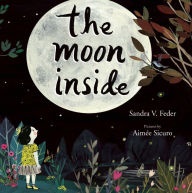 The Moon Inside (Groundwood) by Sandra V. Feder, illustrated by Aimée Sicuro, is a cozy bedtime book about a little girl named Ella who is afraid of the dark. She says, "The sun makes me happy. Yellow is my favorite color." One lovely evening, when Ella's mother takes her daughter outside, she realizes the golden moon is her favorite color, too, "only quieter." Sicuro's stylish gouache and ink artwork, at first awash in daytime yellows, deepens and darkens with the setting of the sun.
The Moon Inside (Groundwood) by Sandra V. Feder, illustrated by Aimée Sicuro, is a cozy bedtime book about a little girl named Ella who is afraid of the dark. She says, "The sun makes me happy. Yellow is my favorite color." One lovely evening, when Ella's mother takes her daughter outside, she realizes the golden moon is her favorite color, too, "only quieter." Sicuro's stylish gouache and ink artwork, at first awash in daytime yellows, deepens and darkens with the setting of the sun.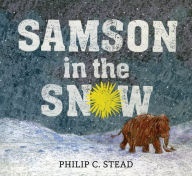 The yellow is dandelion-yellow in Samson in the Snow (Neal Porter/Roaring Brook) by Philip C. Stead. When Samson, woolly mammoth and dandelion gardener, wakes up to a snow-buried world, his beloved yellow flowers help him locate and rescue a little red bird in danger. Stead creates a lonely, yearning mood in richly textured prints and friendly pencil sketches.
The yellow is dandelion-yellow in Samson in the Snow (Neal Porter/Roaring Brook) by Philip C. Stead. When Samson, woolly mammoth and dandelion gardener, wakes up to a snow-buried world, his beloved yellow flowers help him locate and rescue a little red bird in danger. Stead creates a lonely, yearning mood in richly textured prints and friendly pencil sketches. 





 Book you're an evangelist for:
Book you're an evangelist for: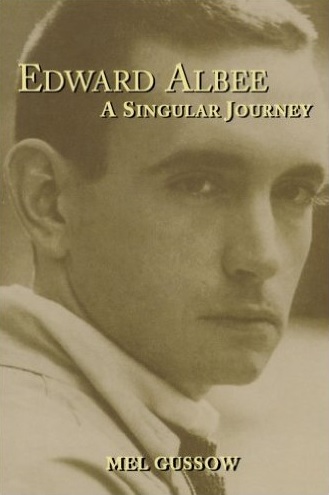 Legendary playwright Edward Albee, who
Legendary playwright Edward Albee, who 